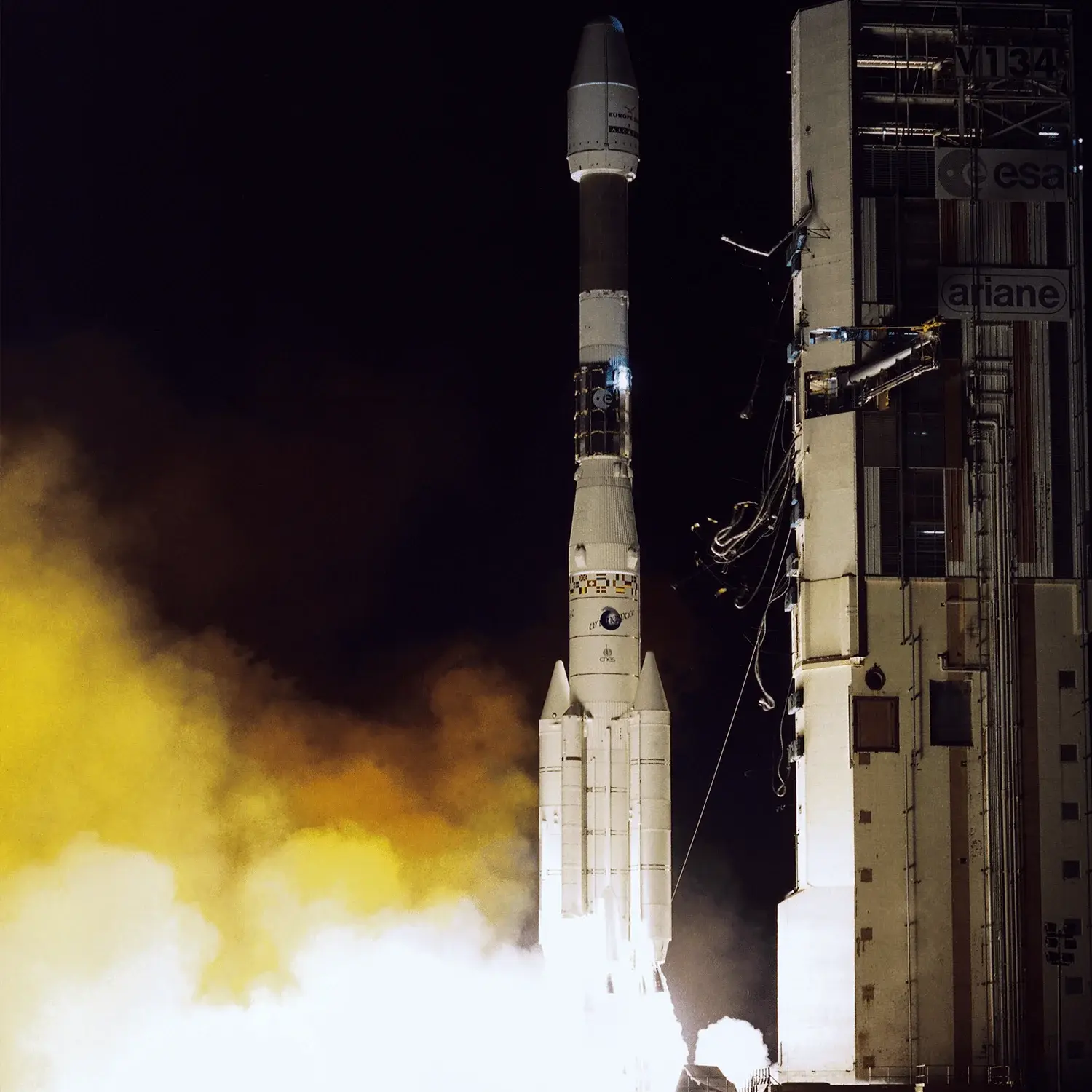Solidaridad 1 & Météosat 6
Launch Success
Liftoff Time (GMT)
01:17:00
Saturday November 20, 1993
Mission Details
Launch Notes
Flight V61.
Météosat 6
The Meteosat satellite system is an example of a very successful European endeavour. First designed in the early 1970s, the first model was launched in 1977, and the same design is expected to be in use until at least the end of 2003. The expected 26 years of operational service amply justifies the initial development effort. A few relatively minor design changes were introduced after Meteosat-3. The overall size of the satellite is 2.1 meters in diameter and 3.195 meters long. Its initial mass in orbit is 282 kg. Additional to this dry mass is the hydrazine propellant used for station-keeping, amounting to approximately a further 40 kg at the beginning of life. In orbit, the satellite spins at 100 rpm around its main axis, which is aligned nearly parallel to the Earth's north-south axis.
Geostationary Transfer Orbit
1 Payload
703 kilograms
Solidaridad 1
When the Mexican government planned the implementation of a second-generation satellite system, it turned again to Hughes Space and Communications Company. The new pair of spacecraft is called Solidaridad, signifying the way satellite telecommunications are uniting the urban and remote parts of the country with one another and the rest of the world. These replace the two Hughes-built Morelos satellites, the first of which was retired in 1994 after nine years of service. The Solidaridad contract was signed in May 1991. The spacecraft is operated by the government agency Telecomunicaciones de Mexico (Telecomm). Hughes provided two Hughes HS-601 model high-power spacecraft, associated ground equipment, and training. The first satellite was launched on Nov. 19, 1993, and the second was on Oct. 7, 1994, on Ariane-44LP H10+ and Ariane-44L H10+ boosters respectively from Kourou, French Guiana. The Solidaridad contract calls for a satellite life of 14 years. To accommodate the high power and capacity Telecomm demands of Solidaridad, the new spacecraft differ markedly from Morelos. Solidaridad is a body-stabilized spacecraft. It consists of a cube-shaped center portion containing the electronic and propulsion systems, and, along the north-south axis, a pair of three-panel solar array wings that total almost 21 meters (68.8 feet) in length. Each spacecraft weighs about 1641 kg (3610 lb) at beginning of life in orbit. Its solar arrays provide 3300 Watts, and a 27-cell nickel-hydrogen battery provides power during an eclipse.
Geostationary Transfer Orbit
1 Payload
2,276 kilograms
Rocket


Manufacturer
ESARocket
Diameter: 3.8m
Height: 58.72m
Payload to Orbit
GTO: 4,220 kg
Liftoff Thrust
5,800 Kilonewtons
Stages
3
Strap-ons
4
Launch Site
Stats
Ariane 4
33rd
Mission
6th
Mission of 1993
European Space Agency
52nd
Mission
6th
Mission of 1993
1993
78th
Orbital launch attempt